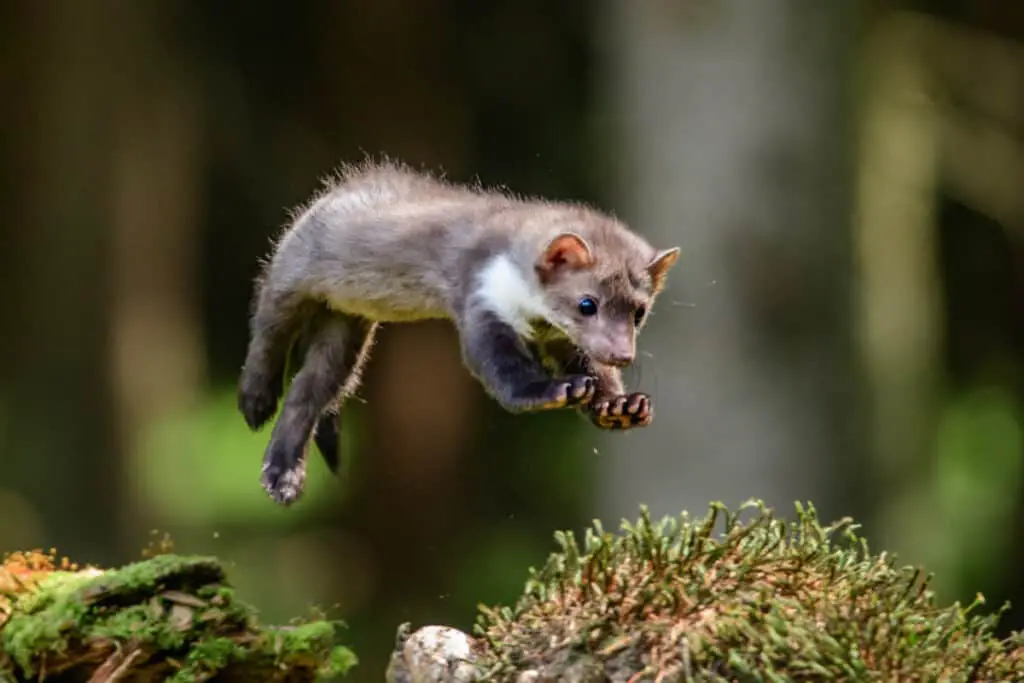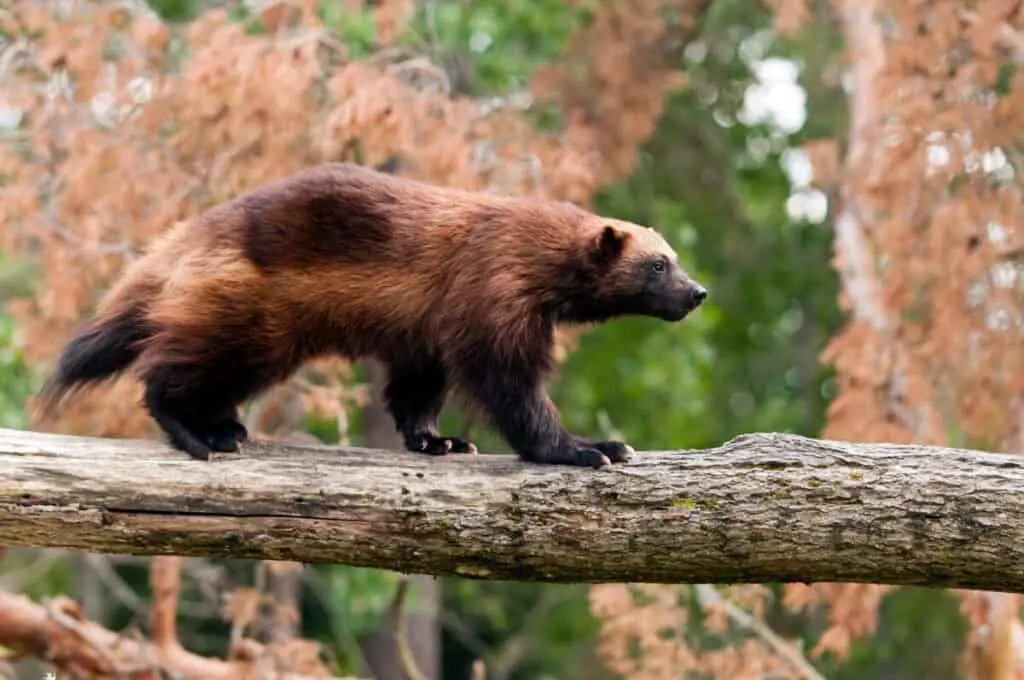The subfamily Guloninae is a group of carnivorous mammals that belong to the family Mustelidae. This subfamily includes several species, such as wolverines, martens, and weasels, all of which are found in different parts of the world. The members of this subfamily are known for their agility, strength, and hunting skills.
Guloninae has been one of the most studied subfamilies within the Mustelidae family due to its ecological importance and unique characteristics. These animals play an essential role in maintaining ecosystems by controlling prey populations and acting as seed dispersers.
Additionally, many species within this subfamily have cultural significance among indigenous communities worldwide. In this article, we will explore the biology, behavior, distribution, and conservation status of Guloninae species.

Taxonomy And Classification
These animals have diverse characteristics but share some common features such as elongated bodies, sharp teeth, and well-developed olfactory senses.
The evolutionary history of subfamily Guloninae dates back to the early Miocene period around 23 million years ago.
Molecular studies suggest that the ancestors of this group originated from Asia and later dispersed across Europe and North America.
Genetic diversity within this subfamily varies greatly with some species showing high levels of genetic variation while others exhibit low variability.
Understanding the taxonomy and classification of these carnivorous mammals can provide insight into their ecological roles and conservation needs in modern-day ecosystems.
| Common Name | Scientific Name | Geographic Distribution |
|---|---|---|
| Wolverine | Gulo gulo | Northern regions of North America, Europe, and Asia |
| Tayra | Eira barbara | Central and South America |
| Fisher | Pekania pennanti | North America |
| Marten | Martes spp. | North America, Europe, and Asia |
| Sable | Martes zibellina | Northern regions of Eurasia |
| Pine Marten | Martes martes | Europe and Asia |
| Beech Marten | Martes foina | Europe and Asia |
| Yellow-throated Marten | Martes flavigula | Southeast Asia |
| Nilgiri marten | Martes gwatkinsii | Western Ghats of India |
| Chinese Mountain Cat | Martes fuscipes | China |
| American Marten | Martes americana | North America |
| Japanese Marten | Martes melampus | Japan |
Physical Characteristics And Adaptations
The subfamily Guloninae, also known as the martens, are small to medium-sized carnivorous mammals that are well-adapted for hunting in their natural environments. They have a slender body with short legs and a long tail. Their fur is thick and soft, which provides insulation against cold temperatures. The color of their coat varies from species to species but is generally brown or black. One notable feature of the subfamily Guloninae is the presence of sharp teeth that allow them to tear through flesh easily.
Evolutionary history has played an essential role in shaping the physical characteristics of these animals. Over time, they have developed a range of adaptations that help them survive in different habitats. For instance, some members of this group can climb trees effortlessly due to their retractable claws and flexible ankles. Others can swim proficiently because of their webbed feet and streamlined bodies.
Hunting techniques among subfamily Guloninae vary between species; however, most hunt by stalking their prey silently until they get close enough for an ambush attack. Some use scent marking to communicate with others in their social groups and increase chances of successful hunts. Additionally, many species are nocturnal hunters who rely on keen senses such as smell and hearing instead of vision during low-light conditions.
Using camouflage to blend in with their surroundings and remain undetected by their prey is another common strategy employed by many members of this group. Overall, the subfamily Guloninae’s physical characteristics and adaptations have allowed them to thrive in a variety of environments, making them successful hunters and a vital part of their ecosystems.
Behavior And Social Structure
Subfamily Guloninae, commonly known as the mustelids, exhibit a range of behavioral patterns. These small carnivorous mammals are mainly solitary creatures that tend to be territorial in nature. Their social interactions mostly occur during mating seasons or when there is competition for resources such as food.
The reproductive strategies of subfamily Guloninae differ among species. Some, like the wolverine, have high levels of parental investment while others such as badgers display little care towards their offspring once they reach adulthood.
Communication methods vary depending on the species within Subfamily Guloninae. Vocalizations play an important role in communication between individuals of some species such as martens and fishers which emit calls to signal aggression or alarm. Scent marking is also critical in territory defense and mate attraction across different members of this group; animals utilize anal glands to mark boundaries by leaving scent cues around their habitat.
Additionally, visual signals such as body postures can help convey information about dominance hierarchy among males of certain species like weasels, ferrets and stoats who will engage in playful “wrestling” matches until one emerges victorious indicating his dominant status over another male member – ultimately determining access to mates and other resources available within their environment.
Distribution And Habitat
Behavior and social structure are important aspects to consider when studying animals, as they provide insight into how individuals interact with one another and their environment.
In the case of subfamily Guloninae, these carnivorous mammals have been found to be solitary hunters that maintain large home ranges. They are known for their strong jaws and sharp teeth which allow them to feed on a variety of prey including rodents, birds, fish, and other small mammals.
In addition to behavior and social structure, understanding the distribution and habitat preferences of subfamily Guloninae is crucial in order to properly conserve this group of animals.
These mammals can be found across a wide geographical range spanning from northern Europe all the way to eastern Asia. Within this range, different species inhabit various ecological niches such as forests, tundras or mountains where food sources are abundant.
Their ability to adapt to different environments has allowed them to thrive in diverse regions despite human activity impacting some populations. By continuing research efforts focusing on the distribution patterns and habitat selection of subfamily Guloninae we could gain better insights into how best protect these unique predators in today’s rapidly changing world.
Conservation Status And Threats
The subfamily Guloninae, which includes species such as wolverines, martens, and weasels, are facing a range of threats that have led to population decreases in many areas.
Habitat loss due to human activity is one major concern for the group, particularly as these animals require large ranges to survive.
Wolverines and other members of the subfamily also face pressure from hunting and trapping, with some populations being targeted specifically for their fur.
To address these concerns, conservation efforts have focused on both threat mitigation and population monitoring.
In terms of mitigating threats like habitat loss or poaching, various strategies have been implemented including protected area designation, education campaigns aimed at reducing demand for animal products like furs and traditional medicines derived from these species.
At the same time, researchers are working to better understand gulonine populations through ongoing monitoring initiatives using techniques like camera traps or genetic analysis.
By evaluating changes in population size over time and identifying key habitats used by these animals, conservationists hope to develop more effective plans for protecting this unique group of carnivores into the future.
Cultural Significance And Importance
Despite the conservation efforts to protect subfamily Guloninae, the population of some species such as wolverines and martens are still in decline due to habitat loss and fragmentation. The increasing human activities such as mining, logging, and urbanization have led to a decrease in suitable habitats for these carnivores. Additionally, they are often hunted for fur trade, which further exacerbates their populations’ vulnerability.
Apart from their ecological significance, Guloninae species hold cultural importance worldwide. They feature prominently in folklore representations across various cultures.
For instance, the Native American tribes believed that wolverines possess supernatural powers and can predict future events. Similarly, in Russia and Finland, Marten’s fur is considered sacred and used for traditional clothing with spiritual significance. Furthermore, some Guloninae species like badgers and raccoons serve culinary purposes; they are hunted for meat or consumed as part of delicacies in certain regions globally.
Despite being culturally significant throughout history, overexploitation has threatened many Guloninae species today.

Conclusion
Subfamily Guloninae, commonly known as the wolverine family, is a group of medium-sized carnivorous mammals that belong to the Mustelidae family.
Wolverines are found in the subarctic and boreal regions of North America, Europe, and Asia.
The species within this subfamily include the wolverine (Gulo gulo), tayra (Eira barbara), martens (Martes spp.), fishers (Pekania pennanti), and sables (Martes zibellina).
Wolverines have distinct physical characteristics and adaptations that enable them to survive in harsh environments.
These animals possess powerful jaws, sharp teeth, and strong forelimbs with large claws for digging through snow or ice.
They also have thick fur coats that protect them from extreme cold temperatures.
Wolverines are solitary creatures that prefer remote habitats such as mountain ranges, dense forests, and tundra.
Despite their importance in maintaining ecological balance by consuming carrion and controlling rodent populations, many species within the Subfamily Guloninae face threats due to habitat loss, poaching activities, climate change-induced disruptions of food supply chains among others.
Conservation efforts aimed at protecting these animals’ habitats will require multi-sector collaborations including local communities who live around various areas where they normally thrive.
In conclusion, Subfamily Guloninae plays an essential role in maintaining biodiversity across its range of distribution.
However, their survival remains challenged by human activities such as hunting and deforestation alongside climatic changes which could threaten population dynamics in some regions where they exist.
Urgent action is needed to conserve these magnificent creatures before it’s too late; otherwise we may lose one valuable asset Mother Nature has bestowed upon us forever.

